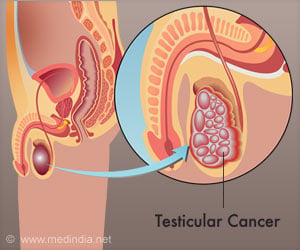In head and neck cancer patients, at-home test detects tumor DNA in urine, offering non-invasive alternative to blood-based biomarkers.

ctDNA transiting into urine is ultrashort and facilitates noninvasive liquid biopsy of HPV+ oropharyngeal cancer
Go to source). Human papillomavirus (HPV) is widely recognized for causing cervical cancer, but is increasingly found to cause cancers in the mouth, throat and other head and neck regions.
‘Researchers took an unconventional approach to craft a urine test for detecting ctDNA related to HPV-positive #headandneckcancer #HPV #cellfreeDNA’





Early detection is critical because detecting a cancer at an earlier stage can lead to better outcomes for patients. Ultra-Short Cell-Free DNA Fragments in Urine
Using whole genome sequencing, the Rogel group showed that cell-free DNA fragments released by tumor cells, which are passed on from the bloodstream into urine through the kidneys, are predominantly ultra-short, with fewer than 50 base pairs. Given their small size, these fragments are likely to be missed using conventional urine or blood-based liquid biopsy tests in detecting circulating tumor DNA (ctDNA).The research was led by Muneesh Tewari, M.D., Ph.D., professor of hematology and oncology, J. Chad Brenner, Ph.D., associate professor of otolaryngology-head and neck surgery, and Paul L. Swiecicki, M.D., associate medical director for the Oncology Clinical Trials Support Unit at Rogel. Initial results are published in JCI Insight.
“In this study we provide evidence to support the hypothesis that conventional assays do not detect ultrashort fragments found in urine, since they are designed to target longer DNA fragments", said study co-first author and research specialist Chandan Bhambhani, Ph.D.
Still in the discovery phase, this mail-in test has already been distributed for research purposes to patients within a hundred-plus miles from Ann Arbor, allowing scientists to gather significant data on the efficacy of the at-home kit. Participants collect a urine sample and have it shipped back to the U-M laboratory, where the testing can be done to detect the presence or absence of head and neck cancer.
Advertisement
While initial studies have focused on head and neck cancer, the paper also describes a new method that could be applied to expand the test to detect other cancers as well. For example, the authors show that the test can detect ctDNA in the urine of patients with breast cancer and acute myeloid leukemia. This suggests new opportunities to also study the application of urine-based testing for these additional cancers.
Advertisement
“Further, these types of tests are likely to have a much higher compliance in patients requiring follow-up testing post treatment, due to the convenience of self-collection of samples, when compared to blood-based assays.”
Reference:
- ctDNA transiting into urine is ultrashort and facilitates noninvasive liquid biopsy of HPV+ oropharyngeal cancer - (https://insight.jci.org/articles/view/177759)














